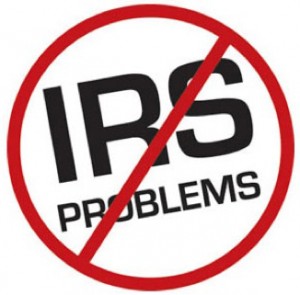 419 Plans
419 Plans
For years, life insurance companies and agents have tried to find ways of making life insurance premiums paid by business owners tax deductible. This would allow them to sell policies at a “discount.”
The problem became acute a few years ago with outlandish claims about how §§419A(f)(5) and (6) of the Internal Revenue Code (IRC) exempted employers from any tax deduction limitations. Other inaccurate assertions were made as well, until the Internal Revenue Service finally put a stop to such egregious misrepresentations in 2002 by issuing regulations and naming such plans as potentially abusive tax shelters or listed transactions that needed to be registered and disclosed to the IRS.
This appeared to put an end to the scourge of scurrilous promoters, as many such plans disappeared from the landscape.
And what happened to the providers that were peddling §§419A(f)(5) and (6) life insurance plans a few years ago? We recently found the answer: Most of them found a new life as promoters of so-called “419(e)” welfare benefit plans.
What does IRC §419(e) provide?
IRC §419(e) provides a definition of the term “welfare benefit fund” and provides that it includes a trust or “organization described in paragraph (7), (9), (17), or (20) of section 501(c)” or any taxable trust that provides welfare benefits. Reference to IRC §419(e) is therefore meaningless.
So what are “§419(e) Plans”?
We recently reviewed several so-called §419(e) plans. Many of them are nothing more than recycled §§419A(f)(5) and (6) plans. Now many of the same promoters simply claim that a life insurance policy is a welfare benefit plan and therefore tax-deductible because it uses a single-employer trust rather than a “10-or-more-employer plan”. Many plans incorrectly purport to be exempt from ERISA, from IRC §§414, 105, 505, 79, 4975, etc.
What are the problems with “§419(e) Plans”?
Vendors commonly claim that contributions to their plan are tax-deductible because they fall within the limitations imposed under IRC §419; however, §419 is simply a limitation on tax deductions. The deductions themselves must be claimed under enabling sections of the IRC. Many fail to do so. Others claim that the deductions are ordinary and necessary business expenses under §162, citing Regs. §1.162-10 in error: There is no mention in that section of life insurance or a death benefit as a welfare benefit.
Some plans claim to impute income for current protection under the PS 58 rules. However, PS 58 treatment is available only to qualified retirement plans and split-dollar plans. (None of the 419(e) plans claim to comply with the split-dollar regulations.) Income is imputed under Table I to participants under Group-Term Life Insurance plans that comply with §79. This issue is addressed in footnotes 17 and 18 of the Neonatology case. Most of the plans have various other flaws or mistakes.
The biggest problem that most promoters ignore
Following up on Congress’s lead, the IRS has fired another potentially fatal shot at spurious welfare benefit plans. On April 10, 2007, the IRS issued Final Regulations under §409A of the IRC.
If it wasn’t clear before, it is crystal clear now: Most of the so-called “419(e)” plans are in violation of the law and subject to hefty penalties because they provide deferred compensation without complying with §409A.
What does §409A do?
Code Section 409A was enacted into law on October 10, 2004, to provide some uniformity and to impose several requirements upon non-qualified deferred compensation plans and similar arrangements.
Among new rules imposed, it:
- Requires a written plan agreement.
- Limits payments to death, disability or retirement.
- Requires a substantial risk of forfeiture to avoid immediate taxation to the employee.
- Imposes timing limitations on benefit distributions.
What is deferred compensation?
Congress drafted §409A broadly to include any payment to an employee after the year in which it was earned or after termination of employment, unless the payment falls under one of the named exceptions. (Exceptions include payments within 75 days, COBRA benefits, de minimis cashouts paid in the year of termination of employment, etc.)
Why does this apply to welfare benefit or life insurance plans?
- 409A does NOT apply to welfare benefits. In fact, several forms of welfare benefits are specifically excluded under 409A. However, such excluded arrangements do not permit transfer of property to the participant except for death, disability and payments made upon retirement in accordance with the §409A rules.
Most of the existing §419(e) and §419A(f)(6) welfare benefit plans do not comply with the §409A rules relative to transfers of insurance policies or cash payments other than upon death.
What are the penalties for failure to comply?
Significant penalties apply for non-compliance with §409A. In addition to having compensation included in income, tax penalties equal to the IRS underpayment rate plus 1% from the time the compensation should have been included in income plus 20% of the compensation amount apply. Additional penalties may apply for failure to report the arrangement appropriately.
When are the new rules effective?
When §409A was added, employers and consultants scrambled to comply because the rules were effective for years beginning after 2004 for all arrangements entered into after October 3, 2004. Existing arrangements were given until the end of 2005 to comply. However, IRS granted an extension for compliance for employers who made a “good-faith” effort to comply with the rules. Under the final regulations, plans have until December 31, 2007, to be in full compliance.
What does this mean to sponsors of 419 plans?
Sponsors of 419 plans have two choices: totally eliminate distributions from their plans (except death benefits and/or medical reimbursements), or comply with Code §409A and the regulations thereunder.
What does this mean to professionals who advise clients?
Under Circular 230 standards, a CPA or attorney who advises his or her client about participating in a non-compliant welfare benefit plan may be liable for fines and other sanctions. We expect that opinion letters relative to such welfare benefit plans have either been withdrawn or will be shortly. We admonish professionals carefully to review all communications with clients relative to such plans. The IRS has recently been successful in imposing huge fines on several law firms for blessing questionable transactions.
What does this mean to employers participating in 419 plans?
This means that employers have until December 31, 2007, to be in compliance. Employers who have adopted 419 plans must choose immediately whether to remain in their current 419 plan, cancel their participation in such arrangement and have their benefits distributed by December 31, or transfer to a plan that is fully compliant with the new rules.
Conclusion
Time is of the essence in making and implementing a decision as to what to do.
We have only seen one or two plans that may be in compliance. We therefore recommend that employers waste no time in contacting a tax professional to review their welfare benefit plan participation to verify compliance with the new law and regulations.



 A business owner wants legitimate tax planning ideas. One solution sometimes offered today is a 419(e) plan (419 Welfare Benefit Plan). The local insurance agent or the company’s CPA who may have an insurance sales license, may suggest that the 419 Welfare Benefit Plan will provide shelter from taxes today, the costs of the plan are tax deductible and the plan will provide tax free benefits for the owner when he or she is ready to retire. The concept seems too good to be true.
A business owner wants legitimate tax planning ideas. One solution sometimes offered today is a 419(e) plan (419 Welfare Benefit Plan). The local insurance agent or the company’s CPA who may have an insurance sales license, may suggest that the 419 Welfare Benefit Plan will provide shelter from taxes today, the costs of the plan are tax deductible and the plan will provide tax free benefits for the owner when he or she is ready to retire. The concept seems too good to be true.
 You Could Be Fined $200000 Per Year!!
You Could Be Fined $200000 Per Year!!




 419 Plans
419 Plans
 Accountants fined $100,000 for signing tax returns and selling 419 plans, 412i plans and other abusive life insurance plans.
Accountants fined $100,000 for signing tax returns and selling 419 plans, 412i plans and other abusive life insurance plans. The Benistar Plan owned the insurance contracts. The excessive cost of providing death benefits was a reason for the court’s finding in Curcio that tax deductions had been properly disallowed.
The Benistar Plan owned the insurance contracts. The excessive cost of providing death benefits was a reason for the court’s finding in Curcio that tax deductions had been properly disallowed.
 Recently IRS raided Benistar, which is also known as the Grist Mill Trust, the promoter and operator of one of the better known and more heavily scrutinized of the Section 419 life insurance plans. IRS attacked the Benistar 419 plan, and one of its tactics was to demand the names of all the clients Benistar worked with — so they could be audited by the IRS, Benistar refused to give the names and actually appealed the decision to turn over the names.
Recently IRS raided Benistar, which is also known as the Grist Mill Trust, the promoter and operator of one of the better known and more heavily scrutinized of the Section 419 life insurance plans. IRS attacked the Benistar 419 plan, and one of its tactics was to demand the names of all the clients Benistar worked with — so they could be audited by the IRS, Benistar refused to give the names and actually appealed the decision to turn over the names.
 Popular so-called “419 Insurance Welfare Benefit Plans”, sold by most insurance professionals, are getting accountants and their clients into more and more trouble. A CPA who is approached by a client about one of the abusive arrangements and/or situations to be described and discussed in this article must exercise the utmost degree of caution, not only on behalf of the client, but for his/her own good as well. The penalties noted in this article can also be applied to practitioners who prepare and/or sign returns that fail to properly disclose listed transactions, including those discussed herein.
Popular so-called “419 Insurance Welfare Benefit Plans”, sold by most insurance professionals, are getting accountants and their clients into more and more trouble. A CPA who is approached by a client about one of the abusive arrangements and/or situations to be described and discussed in this article must exercise the utmost degree of caution, not only on behalf of the client, but for his/her own good as well. The penalties noted in this article can also be applied to practitioners who prepare and/or sign returns that fail to properly disclose listed transactions, including those discussed herein.
 Have you invested in a 419, 412i or Section 79 pension plan?
Have you invested in a 419, 412i or Section 79 pension plan?
 If your clients who are business owners are thinking about setting up a 419 plan, beware! It must be airtight to escape the tentacles of the Internal Revenue Service.
If your clients who are business owners are thinking about setting up a 419 plan, beware! It must be airtight to escape the tentacles of the Internal Revenue Service.